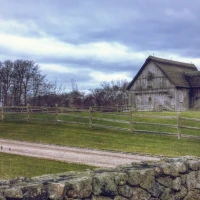The twilight chorus of California’s woodlands is a symphony of mystery—where the faintest rustle of feathers against leaves signals the presence of one of the state’s most enigmatic inhabitants: the owl. In the golden hues of sunset, these majestic night hunters begin their nocturnal activities, dominating the air with silent wings and keen eyes. Across the diverse ecosystems, from the misty redwood forests to the arid deserts, California’s owls are both mythic figures and vital participants in the natural order.
In this comprehensive exploration, we’ll dive deep into the world of California’s owls, introducing the 14 owl species that call the Golden State home. Whether you’re a bird enthusiast, a wildlife photographer, or merely curious about these intriguing creatures, prepare to be captivated by the unique behaviors, habitats, and conservation efforts surrounding California’s night hunters.
Understanding California’s Owls: An Overview
Before embarking on this nocturnal journey, it’s essential to grasp the significance of owls within California’s ecosystems. Owls serve as indicators of environmental health, playing a critical role in controlling rodent populations and maintaining a balanced ecosystem.
The Role of Owls in California’s Ecosystems
- Predation: Owls are natural pest controllers, hunting and feeding on small mammals and insects which can be harmful to crops and natural vegetation.
- Biodiversity: The presence of a variety of owl species indicates a healthy, diverse environment.
- Ecosystem Balance: Owls help to keep prey populations in check, preventing overgrazing and degradation of vegetation.
Spotlight on Species: The Great Horned Owl
The Great Horned Owl (Bubo virginianus) is perhaps California’s most well-known owl, portrayed often in literature and art as the wise old guardian of the forest. Its ear tufts and deep, resonating call make it easily recognizable.
Habitat and Range
Great Horned Owls are spread throughout California, adaptable to a wide range of environments including:
- Dense forests
- Desert areas
- Urban parks
Hunting and Diet
Prowess in hunting cements the Great Horned Owl’s position as a top nighttime predator. It has a diverse diet, consisting of:
- Rodents
- Rabbits
- Skunks
- Other smaller birds
The Mysterious: Northern Spotted Owl
The Northern Spotted Owl (Strix occidentalis caurina) is a species shrouded in environmental debate and conservation efforts, listed as threatened under the Endangered Species Act.
Habitat and Conservation Status
The old-growth forests are the primary residence for the Northern Spotted Owl. Habitat loss due to logging and competition from the invasive Barred Owl has put this species at risk.
Identifying Characteristics
To identify the Northern Spotted Owl look for:
- Dark brown feathers
- Prominent white spots
- Absence of ear tufts
The Coastal Visitor: The Western Screech Owl
Among the smaller species, the Western Screech Owl (Megascops kennicottii) is a regular dweller of the coastal areas and the interior valleys of California.
Unique Adaptations
With camouflage that blends seamlessly into the bark of trees, the Western Screech Owl employs:
- Excellent night vision
- Acute hearing
- Expert flying skills in dense woodlands
Nesting Habits
Nest site selection is integral to the Western Screech Owl’s breeding success, with a preference for:
- Tree cavities
- Abandoned woodpecker holes
- Nest boxes in urban settings
Rarity in the Desert: The Burrowing Owl
Defying the convention of tree nesting, the Burrowing Owl (Athene cunicularia) makes its home in the vast openness of California’s deserts and grasslands.
Behavioral Traits
As a true anomaly among its peers, the Burrowing Owl showcases:
- Diurnal hunting habits (unusual for owls)
- Ground-dwelling tendencies, using abandoned rodent burrows
Conservation and Interaction
Human activity threatens the Burrowing Owl, with:
- Loss of grassland habitat
- Risks from pesticides
- The need for responsible land management
Unseen Yet Ubiquitous: The Barn Owl
The Barn Owl (Tyto alba) is a cosmopolitan species found around the world, including throughout California, recognizable by its heart-shaped face and eerie screeches.
The Farmer’s Friend
This owl is cherished by farmers for its appetite for:
- Mice
- Voles
- Pests that harm crops
Roosts and Reproduction
Barn Owls often roost in:
- Barns (hence the name)
- Belfries
- Hollow trees
The Forest Phantom: The Northern Saw-whet Owl
Tipped in mystery, the Northern Saw-whet Owl (Aegolius acadicus) is a diminutive yet proficient hunter of the night, often heard but seldom seen among the coniferous forests.
Calls of the Night
Distinctive for its repeated, high-pitched calls, the Northern Saw-whet Owl is a night’s serenade that enchants listeners.
Predatory Techniques
Despite its small size, this owl is a formidable hunter, utilizing its:
- Ambush techniques
- Surprise attacks from low branches
- Prefers a diet of mice and small insects
Emblems of Wisdom: The Short-eared Owl
Roaming California’s open spaces, the Short-eared Owl (Asio flammeus) is often spotted at dawn or dusk, hovering over fields in search of prey with its strikingly short ear tufts.
Aerial Mastery
These owls are exquisite flyers, using:
- Low, sweeping flights to hunt
- Dynamic wingbeats to maneuver
Habitat and Distribution
The Short-eared Owl thrives in:
- Grasslands
- Marshes
- Agricultural fields
Among the Big Trees: The California Spotted Owl
The California Spotted Owl (Strix occidentalis occidentalis), a subspecies of the Spotted Owl, is a resident of the majestic forests that characterize the state’s mountainous regions.
Environmental Indicator
Often seen as an indicator species, the California Spotted Owl helps in gauging the forest’s health and stability.
Feeding and Nesting
Perching high in the trees, it primarily feeds on:
- Small rodents
- Birds
Nesting in:
- Natural tree cavities
- Abandoned raptor nests
The Stately: The Long-eared Owl
With slender profiles and elongated ear tufts, Long-eared Owls (Asio otus) epitomize elegance in the bird world. They are widespread across California, albeit secretive.
Camouflage and Silence
As masters of stealth, they use:
- Cryptic plumage to blend into surroundings
- Silent flight to approach prey unnoticed
Social Behavior
Uncommon for solitary owls, Long-eared Owls sometimes form communal roosts during non-breeding periods.
The Alpine Specialist: The Boreal Owl
A visitor from the north, the Boreal Owl (Aegolius funereus) skirts the colder, higher altitudes of California’s mountain ranges, with an affinity for boreal and subalpine forests.
Behavior and Habits
The Boreal Owl remains elusive, with:
- Nocturnal and crepuscular activity peaks
- Predominantly silent nature
Dietary Preferences
Feeding primarily on:
- Small mammals
- Insects
Observing California’s Owls: Tips for Enthusiasts
For those keen on witnessing the allure of California’s owls, there are several tips to ensure both the birds’ safety and your viewing success:
- Observe from a distance to minimize disturbance
- Avoid flash photography, as it can disorient owls
- Consider joining a local birdwatching group for guided owl-watching excursions
Conservation: Safeguarding California’s Night Hunters
Conservation efforts are critical to ensure that the majestic owls of California continue to thrive. Habitat preservation, research, and public education form the trident of strategies employed by conservationists to protect these fascinating birds of prey.
Advocacy and Action
- Support local and national wildlife organizations
- Participate in citizen science projects to monitor owl populations
- Promote responsible land-use policies to protect owl habitats
Conclusion: A Call to Preserve the Mystery
Owls have long captured human imagination with their nocturnal majesty and enigmatic presence. In California, the diversity of owl species is a treasure worth preserving. Through understanding, appreciation, and conservation, we can ensure that the silent wings of the night will continue to grace California’s skies for generations to come. As custodians of these majestic night hunters, our actions today will determine the future of the 14 owls that find sanctuary in the diverse landscapes of the Golden State.










